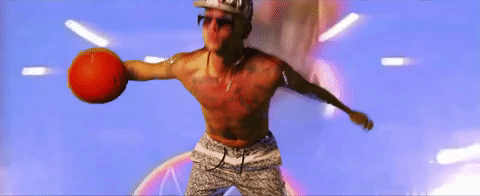- The Reframe Newsletter
- Posts
- 🧠⚡Heuristic Hacks
🧠⚡Heuristic Hacks
Quick Mental Models For Biz + Life
Heuristic Hacks, Mental Models, and Effective Rules of Thumb
Estimated reading ⌛️ time - 11 minutes
Hello Reframers!
If you’re new here, welcome! Every Monday morning, the Reframe Newsletter delivers actionable personal development and leadership tips directly to your inbox. We explore interesting podcasts, books, YouTube videos, business concepts, and more, aiming to inspire and guide you on your journey to a meaningful, fulfilled life.
Heuristic Hacking
In the lightning-fast pace of our world, the ability to make sharp, deliberate decisions is more critical than ever. Time is a luxury we seldom have, forcing us to make snap judgments on the fly and decide NOW.
So how do we train ourselves to make better, faster decisions without the luxury of time?
Mastering our intuitive, quick-thinking System 1 (refer back to our Thinking About Thinking (pt1) newsletter to learn more), powered by time-tested heuristics, becomes our secret weapon. Heuristics fall into the category of creating helpful “shortcuts” to help you make faster decisions without using too much brain power. Heuristics don’t promise 100% results, but they promise a quick decision and mostly correct results.
Keep reading to check out my favorite game-changing heuristics I've gathered from hours of listening to podcasts, reading books, and sitting in meetings with consultants who have to pretend they know what they are doing 🙂.
Time Tested Heuristics
🤌🏽 Pareto Principle (80/20 Rule): This one is simply a classic and can be used in life and business to help focus on the most efficient use of time and resources.
This rule suggests that 80% of outcomes result from 20% of efforts.
In business, you may see that 80% of the work is done by 20% of the people or that 80% of sales come from 20% of customers.
Fun Fact: The 80/20 rule was named after Vilfredo Pareto, an Italian economist who, in the late 19th century, observed that approximately 80% of Italy's land was owned by 20% of the population.

➕ The Eisenhower Box (Urgent-Important Matrix): Helps prioritize tasks by categorizing them as urgent, important, both, or neither, enabling better time management and focus. In a perfect world, you want to hang out in the important, not urgent section (longer term, more strategic thinking), but we likely often find ourselves in the urgent and not important section (putting out those fires, baby 🔥🔥🔥).
I use the app TickTick for my on-the-go prioritization. Otherwise, I use a self-created Eisenhower Matrix in my Notion workspace.

😞 Minimize Regret: When faced with tough decisions, choose the path that will minimize future regret.
I’ve lived in San Francisco and Boston, and this was the heuristic I used when deciding if I should move to those cities or not - at the time, these were HUGE moves for me, and the easy decision would have been to stay put. Deep down, I knew I would regret not trying something new, in this case, living in a different city.
No ragrets regrets, I’m so thankful I made those huge risks in my early, adult life. I’ve made so many great friends and have so many fond memories from my time in both of those cities. I would have regretted never making those decisions.
Kudos, younger me!
⚄ The 5x5 Rule: If it won't matter in 5 years, don't spend more than 5 minutes worrying about it. 5×5 is also a staple workout routine in the strength and conditioning world, funny enough. Go ahead and get your gains in too.
When not in the weight room, the 5×5 rule helps manage stress and provides perspective on what truly matters. This is also an excellent heuristic for someone playing the infinite game and thinking with a longer-term perspective.
⌚ The Two-Minute Rule: Do a task immediately if it takes less than two minutes to do. This heuristic is excellent for overcoming procrastination and keeping up with small tasks.
Examples: Sending an e-mail, responding to a friend’s text, making love (lol, just a joke, take it easy), etc.
📉 The Law of Diminishing Returns: Beyond a certain point, additional effort, time, or resources yield progressively smaller increases in outcomes. Recognizing this can help in allocating efforts more efficiently and avoiding burnout.
Cramming for an exam boosts your grades dramatically at first, but soon, every additional hour makes less of an impact as your brain hits its learning limit in one go. The same can be expressed for time working out in the gym; you are doing yourself more harm than good at a certain point.

🔦 The Spotlight Effect: People tend to overestimate the extent to which others note their actions and appearance. Realizing this can reduce anxiety and increase confidence in social situations.
Last gym reference for today - We mistakenly think the gym's spotlight shines just on us, magnifying every move we make and making us think everyone is meticulously watching our every move. That's the spotlight effect IRL. But in truth, everyone's too caught up in their own sweat sesh to notice.
Unless you’re “that guy” at the gym wearing neon tights, no shorts over them, and pit vipers, you’re probably okay, and everyone is just focused on themselves.
Every gym has this guy…

Gif by migos on Giphy
🧠 Recognition Heuristic: A mental shortcut that occurs when people make decisions based on whether they recognize something, assuming that if they recognize it, it must be more important or better than what they don't recognize. This heuristic suggests that recognition alone can be a guide to judgment, especially in situations where one has limited information.
In "Slumdog Millionaire," Jamal's journey through the game show is fueled by his own memories. Each question he faces triggers a flashback to moments in his life, allowing him to use recognition from his experiences as a guide. This clever twist on the recognition heuristic shows how Jamal's unique past becomes the key to his success, one memory at a time.
⚓ Anchoring and Adjustment: Involves relying too heavily on an initial piece of information (anchor) and adjusting from it to make a decision. This heuristic highlights the impact of first impressions on decision-making.
For example, if you're negotiating the price of a car and the seller starts with an asking price of $20,000, that figure sets the stage for the negotiation. It influences the final price, even if the car's value might be significantly lower. This initial number becomes the reference point for all subsequent discussions and decisions, often skewing our perception of value and fairness toward the anchor.
🖼️ Framing Effect: Shows how the presentation of choices can influence decisions. The same information can lead to different decisions based on how it's framed.
Imagine you're deciding between two surgeries: One description says there's a 90% survival rate, while the other says it has a 10% mortality rate. Even though the statistics convey the same outcome, you will likely favor the surgery with the 90% survival rate.
This shift in preference, triggered by how the options are framed — one in positive terms and the other in negative — illustrates the framing effect in all its psychological intrigue.
🥶 Paralysis by Analysis: This occurs when too much information or too many options prevent making a decision. It suggests that sometimes, less information can lead to better decisions. Less is more.

Giphy
💭 If You Can’t Decide, the Answer is No: When faced with indecision, embrace "no" as your default. This principle advises that if clarity eludes you, opting for inaction shields you from the pitfalls of rushed choices, ensuring you leap only when the ground is firm beneath your feet.
“If it’s not a HELL YES, then it’s a no”.
In Conclusion
These are some of my favorite heuristics and mental models that I use as often as possible. You may find that you have your own set of rules of thumb or mental models that you operate with or live by. If you feel compelled, I’d love to hear what heuristics you carry with you to make your life a little easier, more meaningful, and more impactful to others!
-With gratitude, your Chief Reframer and Heuristic Hacker 🙂
If you feel like the Reframe Newsletter provides value to you every week, I would encourage you to share this with a family member, friend, or colleague.
It means a lot to us, and we track any referrals from our subscribers to reward you with free things in the future! (stay tuned)
The Content is for informational purposes only. You should not construe such information or other material as legal, tax, investment, financial, or other advice. Nothing in this newsletter constitutes a solicitation, recommendation, endorsement, or offer.
